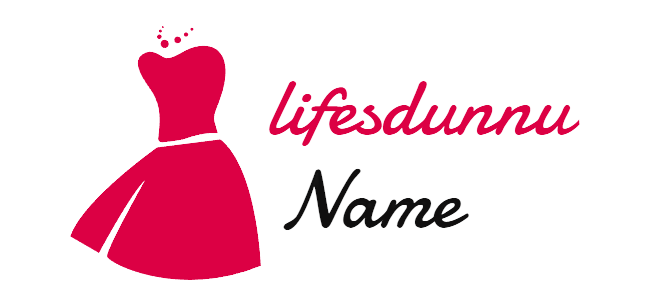As the 1920s roared and Jazz music filled the air, Art Deco came to life, its ornate and flashy geometric designs and motifs quickly becoming the new touch of modern style. Though the art deco movement has since come and gone, its unique style is still echoed in the fashion trends of today. From the sequins of evening gowns to the geometric silhouettes of dresses, Art Deco’s iconic style continues to leave a lasting impression in fashion. Let’s explore the ways art deco has been a part of fashion and inspired today’s trends.
1. Timeless Appeal: Captivating Art Deco Fashion
Art Deco fashion is nothing short of breathtaking. It’s a timeless style with captivating details that bring us back to the celebrated period.
The intricate and ornate forms of Art Deco designs never cease to amaze. With flashy trimmings and fiery sparkle, they bring out the inner classic glamour in everyone. The shape, color, and texture of this look evoke a sense of romance and allure. Think boxy lines and velvet textures, black and gold pieces, and shimmering fringes.
From head-to-toe, the look draws you in with its delicate beauty. Here’s a few of the ways you can recreate this regal look:
- Headpiece – Opt for a beaded headpiece with delicate details that will leave an impression.
- Dresses – Choose a form-fitting dress with a modern silhouette and subtle Art Deco touches.
- Footwear – Pick a unique and eye-catching pair of heels that take the style to the next level.
- Jewelry – Add intricate pieces of jewelry like cocktail rings, necklaces, and drop earrings to complete your look.
Nothing says glamour like Art Deco, so get ready to shine!
2. Exploring Design Icons of the Roaring 20s
Despite the grime and grumble of the First World War, the late teens of the 20th century offered hope and invention – two of the most striking aspects being the design styles seen in architecture and fashion. Shapes and colors merged in creative ways to craft the iconic look of the Roaring 20s.
Sleek lines and tall art deco facades adorned the architectural landscape. Buildings were decorated with ornamentations such as zig-zags, chevrons, and abstract art deco patterns that set them apart from the homely Victorian structures of the past. Bright colors like yellow, aqua, and purple covered the outsides of department stores and private establishments, introducing a playful and unbridled sense of joy throughout cities.
The fashion of the Roaring 20s was no less awe-inspiring. With the shift of hemlines came the rise of the flapper – a woman of independence. Skirts were shorter and dresses featured more curves, bold colors, and shimmering materials. Women donned their own unique styles with hats, feathers, cloches, and hair accessories so recognizably outside the box the decade continues to be remembered for its fashion – most notably the little black dress
- Architecture: art deco facades, abstract patterns, zig-zags, chevrons, bright colors
- Fashion: flapper dresses, shorter hemlines, bold colors, shimmering materials
3. Defining the Characteristics of Art Deco Trends
The innovation of 1920s Art Deco has significantly influenced the modern world of design. Featuring an array of distinct characteristics, the style has transcended time and grown into one of the most recognisable design aesthetics around. From bold, geometric shapes to the integration of metals and luxurious materials, here are some of the defining features of this timeless trend:
- Geometric elements – Art Deco conveys a feeling of cleanliness and simplicity through the use of geometric shapes such as circles, triangles, rectangles and hexagons.
- Glowing, metallic colours – Contrasting hues of vivid chrome, bronze, silver, and gold are prevalent in Art Deco trends, which create a glowing, luxurious look.
- Importance of symmetry – When done right, the symmetrical display of Art Deco is incredibly eye-catching. It’s a feature that helps differentiate it from other styles of design.
In addition to these features, Art Deco is also often seen to incorporate elaborate, intricate images such as mosaics, alluring and classically feminine silhouettes. From furniture to architecture, aspects of the Art Deco trend can be found across the globe as a widely recognised source of elegance and sophistication.
As its influence continues to thrive in the modern world, the unique features of this classic aesthetic can be used to add a touch of glamour and luxe to a variety of designs.
4. Creative Inspiration: Finding New Expression in Design
When it comes to design, it’s easy to fall into a creative rut. You can find yourself drawing on the same aesthetics, techniques and ideas time and again. We’ve all been there! To shake things up a bit and get inspired by new techniques, consider the following tips for finding new expression in design:
- Delve into art history: Brush up on the classics to find new points of inspiration.
- Try a new medium: Have you ever tried traditional animation techniques? How about translating your sketches into vector illustrations?
- Research the work of others: Check out design blogs and portfolios of experienced professionals – there are always new techniques and approaches to discover.
Move outside your comfort zone: Bring an honest, open approach to creative problem-solving. Take calculated risks and challenge yourself to come up with something completely unexpected.
Break up your routine: Step away from your desk and explore the world around you. See how people interact with design in everyday life, from packaging to wayfinding signs – take note of the creative solutions you observe.
5. Architectural Inspirations in Fashion: An Expression of Luxe Living
In the modern age, luxury and beauty go hand in hand. Fashion designers are increasingly finding inspiration from the world’s most breathtaking architectures. From Ancient Greece to Ming Dynasty, they are looking to prominent structures to make classic pieces that are durable and stylish.
As humans living in a world that is rapidly evolving, it is natural that designers have an inclination towards edifices that reflect a unique and unconventional story through its presence on the landscape. Architects have used their influence to create captivating artifacts of history, from Taj Mahal to Eiffel Tower. Fashion designers have taken that allure by meshing it with their own ideas and used it to craft an ensemble that speaks refinement.
- Frivolous Flares of Versace – Reconstruction of the Greek ornamentation. Metallic and geometric adornments that exude an air of affluence.
- Baroque Finery of Chanel – Inspired by the Catholic Baroque era with its tapered tiers and shiny jewels that bring to life a design which is at once both historic yet timeless.
- Decorative Drapery of Yves Saint Laurent – Curved hemlines and intricate cuts inspired by the pillars and palaces of India.
These luxe pieces can make any wardrobe pop. With every button, zipper and cuff, fashion designers continue to dig into the history of architecture to bring about something novel and innovative. The revival of the old can result in a new era of luxury and broadens our appreciation for the intricate designs that feature a range of inspirations from our very own heritage.
Whether you’re feeling bold and cutting edge or looking for something more subtle, the Art Deco movement will be a source of inspiration. Utilizing the glamour and opulence of the era, you can take your wardrobe to new heights! With a nod to the past and a spark of creativity, you can create a look that transcends time.


